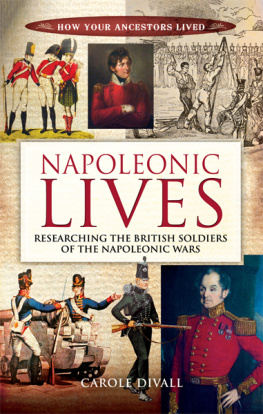Peter Hofschroer - The Hanoverian Army of the Napoleonic Wars
Here you can read online Peter Hofschroer - The Hanoverian Army of the Napoleonic Wars full text of the book (entire story) in english for free. Download pdf and epub, get meaning, cover and reviews about this ebook. year: 2012, publisher: Osprey Publishing, genre: Non-fiction. Description of the work, (preface) as well as reviews are available. Best literature library LitArk.com created for fans of good reading and offers a wide selection of genres:
Romance novel
Science fiction
Adventure
Detective
Science
History
Home and family
Prose
Art
Politics
Computer
Non-fiction
Religion
Business
Children
Humor
Choose a favorite category and find really read worthwhile books. Enjoy immersion in the world of imagination, feel the emotions of the characters or learn something new for yourself, make an fascinating discovery.
- Book:The Hanoverian Army of the Napoleonic Wars
- Author:
- Publisher:Osprey Publishing
- Genre:
- Year:2012
- Rating:3 / 5
- Favourites:Add to favourites
- Your mark:
- 60
- 1
- 2
- 3
- 4
- 5
The Hanoverian Army of the Napoleonic Wars: summary, description and annotation
We offer to read an annotation, description, summary or preface (depends on what the author of the book "The Hanoverian Army of the Napoleonic Wars" wrote himself). If you haven't found the necessary information about the book — write in the comments, we will try to find it.
The Hanoverian Army of the Napoleonic Wars — read online for free the complete book (whole text) full work
Below is the text of the book, divided by pages. System saving the place of the last page read, allows you to conveniently read the book "The Hanoverian Army of the Napoleonic Wars" online for free, without having to search again every time where you left off. Put a bookmark, and you can go to the page where you finished reading at any time.
Font size:
Interval:
Bookmark:
Men-at-Arms 206

Peter Hofschrer Illustrated by Bryan Fosten
Series editor Martin Windrow
Of all the armies of the German States, that of Hanover remains of greatest interest to the British reader due to the close links between the crowns of the two states. One of the great ifs of recent history is the question of the succession to the British throne in 1837. Had the British crown, like that of Hanover, been exclusively the property of the males of the line, then the century-old link between these two crowns would have been maintained. Prussia could not then have seized Hanover in 1866 without risking war with Britain, and Germany could not have been united under Bismarcks Prussia. Where, then, would Britain have stood on the eve of the Great War? Hanover is the symbol of the close relationship of the British and German peoples. Hanoverian regiments went to war in 1914 with cuffbands and helmet badges bearing battle-honours won alongside their British comradesGibraltar, the Peninsula and Waterloo.
Hanovers geographical position made her vulnerable to conquest by her predatory neighbours. She had been occupied during the Seven Years War (17591763), was annexed by Prussia in 1806, became part of the Napoleonic satellite Kingdom of Westphalia in 1807, and parts even became absorbed by France in 1810. Refugees from Hanover remained loyal to their legitimate ruler and fled to Britain, participating in the formation of the famous Kings German Legion. The state of Hanover was restored after the Battle of Leipzig (October 1813), and became a kingdom in 1814. Throughout this period, Britain and Hanover had the same head of state, George III. He was Prince Elector of Hanover and King of Great Britain until 1820, although his son, who succeeded him as George IV, ruled Britain as Prince Regent from 1810.
The Hanoverian army wore uniforms and carried items of equipment largely similar to those used in the British Army. The Kings German Legion, formed in 1803, was based more or less on an amalgam of Hanoverian and British military traditions. Not all redcoats armed with the Brown Bess could speak the Kings Englishthe king himself was perhaps not as proficient in the language as he should have been. Some of the most reliable troops Wellington had at Waterloo were red-coated Germans, veterans of the KGL.

Contemporary watercolour, from the series by Ronnenberg, showing an officer (left) and private of the 8th Infantry Regiment in c. 1791; this unit had garrisons at Celle, Gifhorn, Burgdorf and Hildesheim. The red coat was faced white, and buttons and lace were silver and white. For general characteristics, cf. Plates .
At this time, Germany was a federation of states with an elected emperor; this system, a legacy of Charlemagne, finally collapsed under the pressure of the expanding Napoleonic French Empire. The rulers of a selected number of German states formed the electoral college which chose the emperor, the rulers of Hanover being granted this privilege in 1692. Since the 16th century members of the house of Habsburg, the rulers of Austria, had been elected as emperor.
The Electorate of Hanover had met its obligations to the emperor and provided contingents for various wars in the 17th and 18th centuries. Once linked with the British crown, the Hanoverian army fought alongside Britains armed forces in opposition to Austria and France in the Seven Years War. After the Peace of Hubertusburg which ended the Seven Years War, tension remained within Europe, particularly between Prussia and Austria, the rivals for hegemony in central Europe. The smaller German states attempted to form a third power bloc to protect their own interests, but this did not meet with success. The balance of power changed radically once the French Revolution broke out.
From the 1770s, the German states started to examine their administrative systems and some commenced a series of reforms. Karl August von Hardenberg, later a leading reformer in Prussia, attempted to reform the Hanoverian system, but his suggestions were rejected. The fact that George III never visited this part of his domain, leaving its administration to local appointees, did little to help the matter.
Without administrative reforms, there were insufficient moneys available to finance the army that Hanover needed to protect herself from her larger neighbours. Hanover had about 37,000 men in the field in 1762, but this was reduced to 14,000 at the end of the war. In 1785 the army had an establishment of 26,000 men, which continued to decline: in 1802, the Hanoverian army totalled a mere 17,000 men. The following year Hanover was occupied by the French, and the army disbanded. Her territories became a pawn in the power struggles between Britain, France and Prussia.
The army, however, was not slow to modernise. The experience gained in the Seven Years War was set out in new drill regulations; the infantry got theirs in 1784, the cavalry in 1787. The cavalry regulations were particularly good. The distances at which attacks were to be launched were restricted so that the commanding officer could maintain better control of his men. Of particular note is the fact that the light dragoons had the same regulations as the rest of the cavalry; the Hanoverian horse was thus becoming more like the all-purpose cavalry of the 19th century than the specialist cavalry of the 18th.

Officer and man of the 14th Infantry in c. 1791, at about the time of its return from the Indies but before it (and the 15th) were disbanded and used to form the new 14th Light Infantry. The red coats are faced green; metal and lace are silver and white. Unusually, the officers lapels bear lace loops; both men seem to have lace-edged collars; and note the atypical lace trim around the tops of the cuffsthe right-hand man may represent an NCO? Plumes in this unit were yellow/white for officers and red/white/green for rankers. (Ronnenberg)

Hanoverian infantry battalion in battle formation, up to 1803; the key is as follows: Ko = commander, M = major, A = adjutant, K = captain, O = lieutenant or ensign, Ao = artillery officer, So = skirmishers officer, F = colour, U = NCO, Au = artillery NCO, H = bugler, T = drummer or musician, Z = sapper, A = gunner, Bt = battalion drummer, Ka = cannon, Pr = limber, P = horse; long bars indicate ranks of men.
There was a great emphasis on proper training in the Hanoverian cavalry. In fact, the army command went as far as appointing regimental trainers (Regimentsbereiter) centrally, so that each regiment was trained to exactly the same standard. Furthermore, as the North German Plain is well-known for the quality of its horseflesh, the Hanoverian cavalry was particularly well mounted. Despite a lack of funding, Hanovers mounted arm was one of the best trained and mounted in Europe.
Next pageFont size:
Interval:
Bookmark:
Similar books «The Hanoverian Army of the Napoleonic Wars»
Look at similar books to The Hanoverian Army of the Napoleonic Wars. We have selected literature similar in name and meaning in the hope of providing readers with more options to find new, interesting, not yet read works.
Discussion, reviews of the book The Hanoverian Army of the Napoleonic Wars and just readers' own opinions. Leave your comments, write what you think about the work, its meaning or the main characters. Specify what exactly you liked and what you didn't like, and why you think so.













